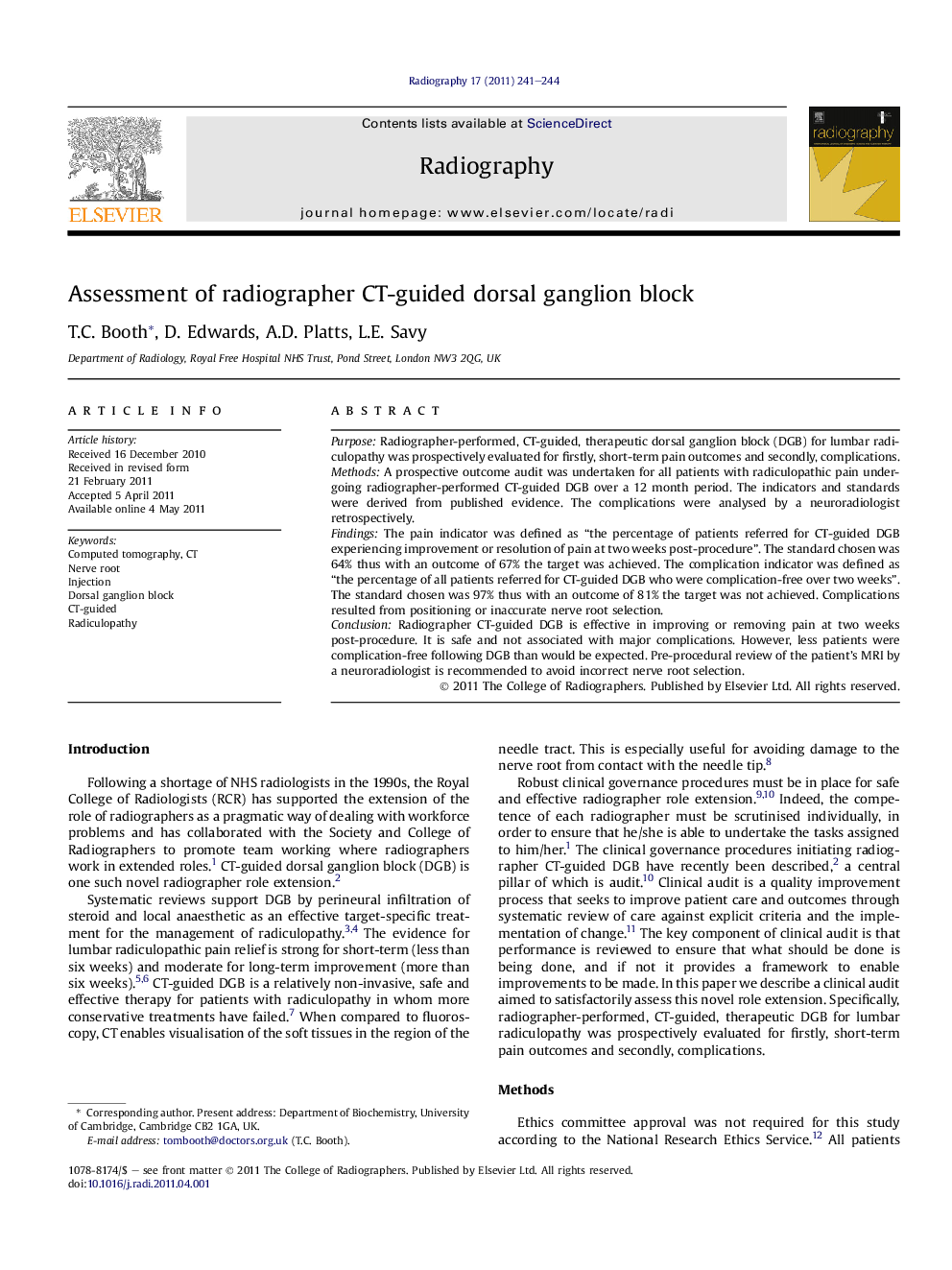| Article ID | Journal | Published Year | Pages | File Type |
|---|---|---|---|---|
| 2735895 | Radiography | 2011 | 4 Pages |
PurposeRadiographer-performed, CT-guided, therapeutic dorsal ganglion block (DGB) for lumbar radiculopathy was prospectively evaluated for firstly, short-term pain outcomes and secondly, complications.MethodsA prospective outcome audit was undertaken for all patients with radiculopathic pain undergoing radiographer-performed CT-guided DGB over a 12 month period. The indicators and standards were derived from published evidence. The complications were analysed by a neuroradiologist retrospectively.FindingsThe pain indicator was defined as “the percentage of patients referred for CT-guided DGB experiencing improvement or resolution of pain at two weeks post-procedure”. The standard chosen was 64% thus with an outcome of 67% the target was achieved. The complication indicator was defined as “the percentage of all patients referred for CT-guided DGB who were complication-free over two weeks”. The standard chosen was 97% thus with an outcome of 81% the target was not achieved. Complications resulted from positioning or inaccurate nerve root selection.ConclusionRadiographer CT-guided DGB is effective in improving or removing pain at two weeks post-procedure. It is safe and not associated with major complications. However, less patients were complication-free following DGB than would be expected. Pre-procedural review of the patient’s MRI by a neuroradiologist is recommended to avoid incorrect nerve root selection.
